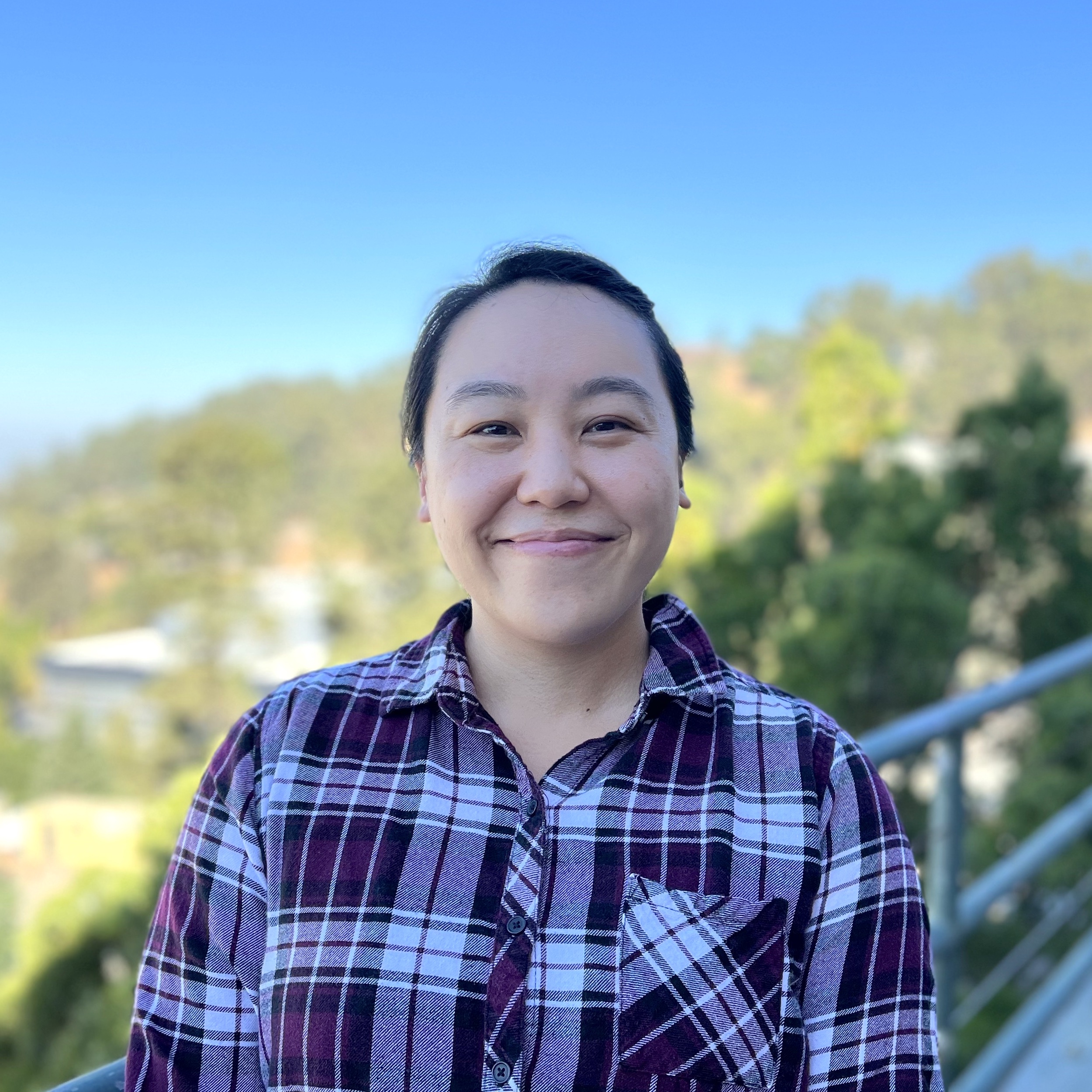
Dahlia An is new to the ALS but not to Berkeley Lab. Read about how she works with users and beamline scientists and how it connects to her past lives as a researcher and undergraduate student instructor. And, learn how her hobbies still allow her to experiment.
What does your role entail?
It’s x number of parts experiment coordination and x number of parts bio safety.
On the experiment coordination side of things, I primarily work with the User Office, beamline scientists, and users to make sure ESAFs (experiment safety assessment form) are authorized and certified, and I also work with people on the safety team, mech techs, electronics maintenance (EM) techs—basically, everyone on the Experiment Safety webpage—to make sure experiments are set up and conducted safely.
On the biosafety side of things, I run the ALS Bio Labs, review users’ biological samples to make sure they’re ok to bring to the ALS, provide feedback on users’ bio proposals, and manage bio-related documents, like work planning and control (WPC) activities, soil permits, and others.
I’ve been in this job for four months and I’m still figuring things out.
You’re new to the ALS, but not new to the Lab, right? What did you do before?
I spent over a decade working in the Chemical Sciences Division before taking a break. I worked in a research group, and when I started, we were a pretty small operation. Our team consisted of the PI, one postdoc, and then me and one other research associate (RA). In the period of time I worked there, we grew to over 20 people, and our PI became a tenured professor at UC Berkeley. It was cool to be a part of that and realize that I was doing some work that was pretty impactful. I actually even performed some experiments at the ALS as a user!
How did you become interested in research?
A big part of that was actually me not knowing what I wanted to do with my life! I graduated with a degree in molecular and cell biology, and a lot of people in my major intended to become medical professionals. Anything else was a murky space. I applied for a bunch of jobs and ended up joining a research group where I was able to use techniques I had taught as an undergraduate student instructor at UC Berkeley. As an undergrad, I didn’t think I would go into benchwork, but I ended up really liking it.
The group I was in was developing something that would have a huge impact on the world. I thought, “We’re gonna say lots of lives!” So, I got into the mission, I really liked the people, and I just got hooked on the entire thing.
After working at LBL for over a decade, I took a break, and truth be told, I wasn’t sure if I would come back. I had spent so much of my career working here, and the world is a really big place! I was interested in trying something different.
What brought you back to the Lab?
Part of the pull was doing something different. I wasn’t going to be at the bench. A big part of it was also the people.
I knew people who worked in safety. They interacted with me when I was a researcher, and they said, “We’re on the same page about safety. We’re on the same page about integrity, and you have a research background, which could be really useful in safety.”
I liked the beamline scientists I’d worked with as a user, then I met all the people who interviewed me and liked them too. So, I knew that I’d be okay here!
What did you do when you came to the ALS as a user?
I grew protein crystals with elements like Pu, Am, Cm, Bk, and Cf, and brought them to Beamline 5.0.2. Thank goodness for beamline scientists! Corie Ralston and Marc Allaire not only showed me how to mount stuff on a goniometer, but they also had the patience to sit there and explain, “See these dots on the screen? This is what they mean.” It gave me context for my project.
Being a user, being a researcher, helped me better understand what people are going through. Sometimes, experiments don’t work, and maybe they had beamtime, but won’t be able to make it. It happens. I’ve developed coping mechanisms, like, “This didn’t work. Well, good thing I had 20 other things I had to do today.”
What kinds of inclusion, diversity, equity, and accountability (IDEA) efforts are you involved with?
I’ve dabbled in the ALS Social Activities task force, because in my old group, I planned a lot of group activities. Since I’m a recent hire, I can share what I liked and what was challenging about the hiring process with the ALS Hiring task force. We as an organization have to actively make an effort to hire a diverse workforce, because it’s easy to just fall into traditional habits. I enjoy the events when students come, like the SAGE camp (Science Accelerating Girls’ Engagement in STEM) or Nuclear Science Day.
What do you like doing in your free time?
I like trying new things. I did a lot of cooking during the pandemic and during my time off—making things from scratch that I never had the time or energy to do before. For example, I made pasta from scratch, and it was al dente, it was Q, I don’t know if there’s an English word for it, just an almost boba-like texture. It was way better than what I’d buy for 99 cents in a box.
Cooking and baking are rewarding not just for my taste buds, but it’s all the things that go along with it. I get to share it with my friends, learn about the cultures and traditions behind different foods. And, it allows me to satisfy that urge to experiment!